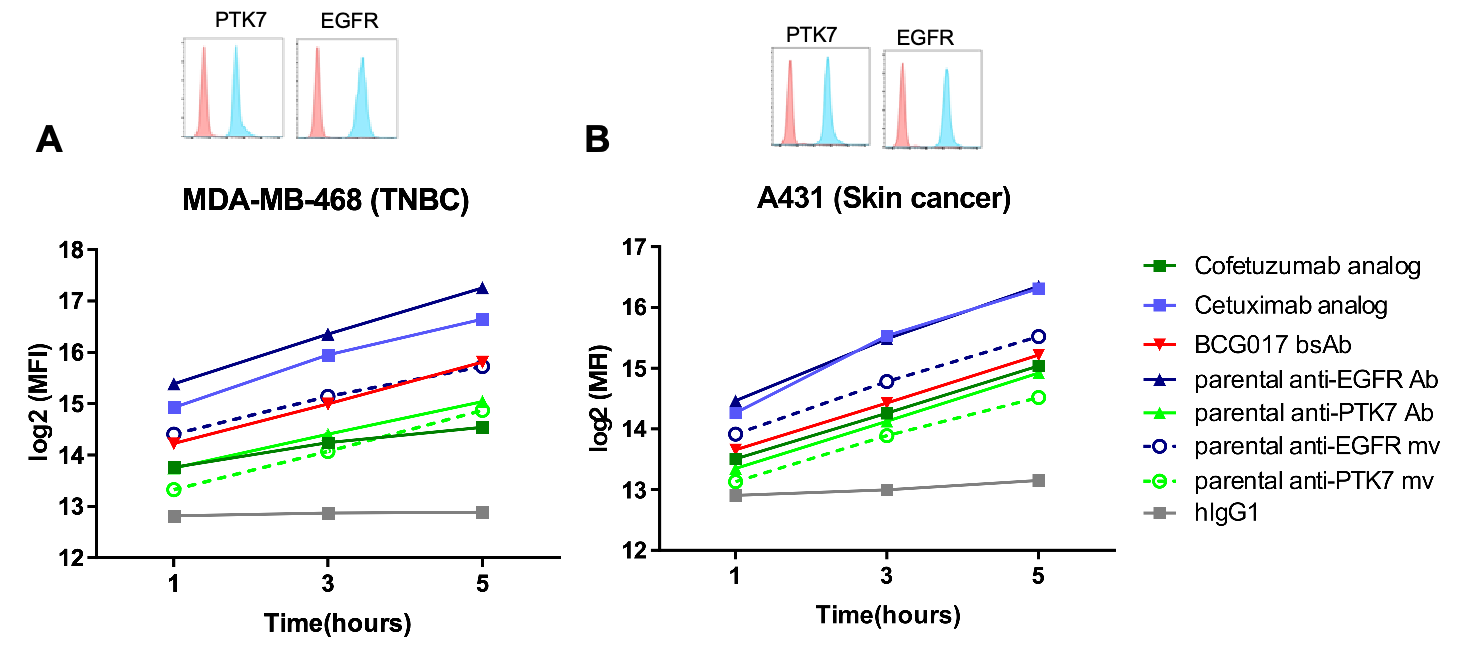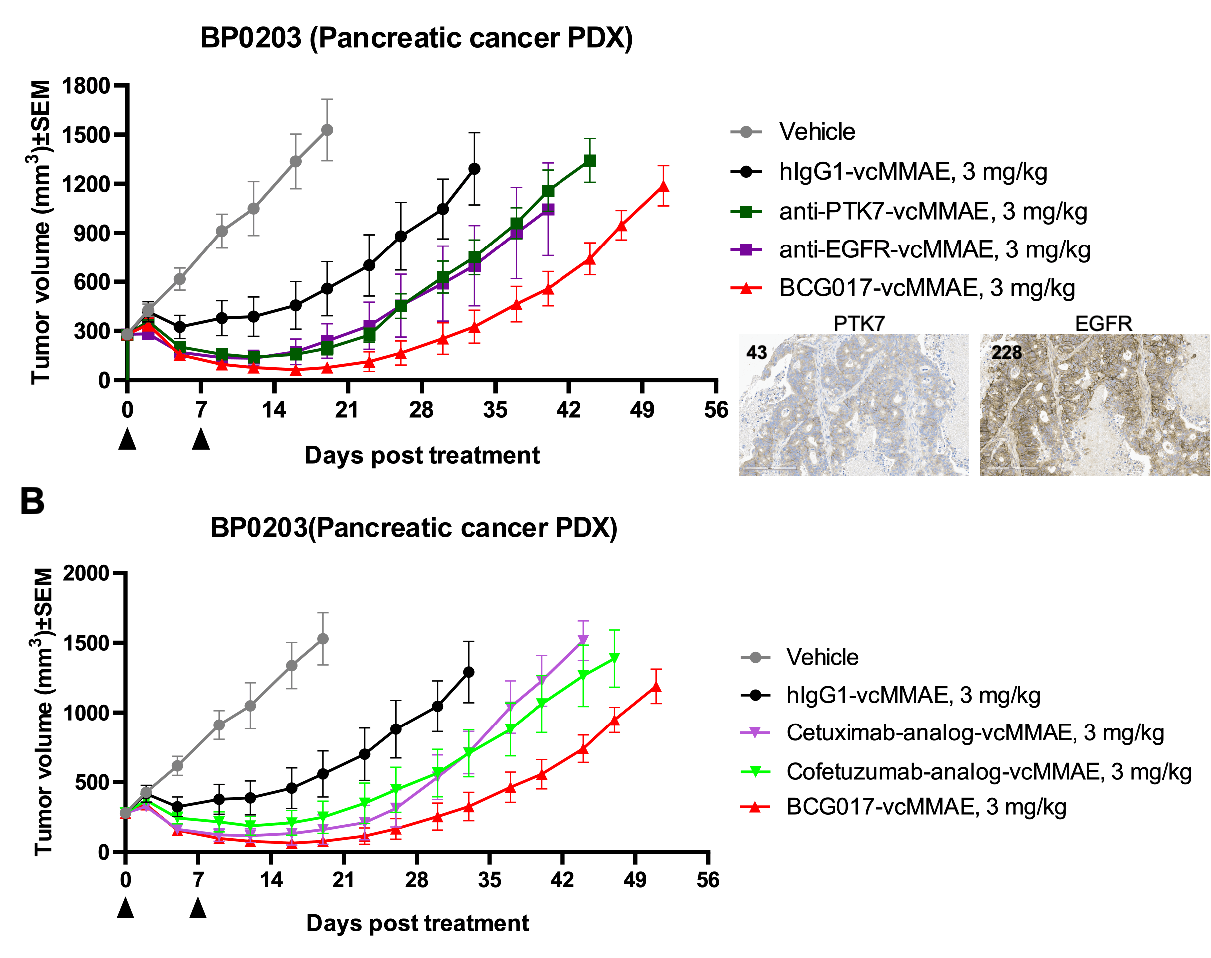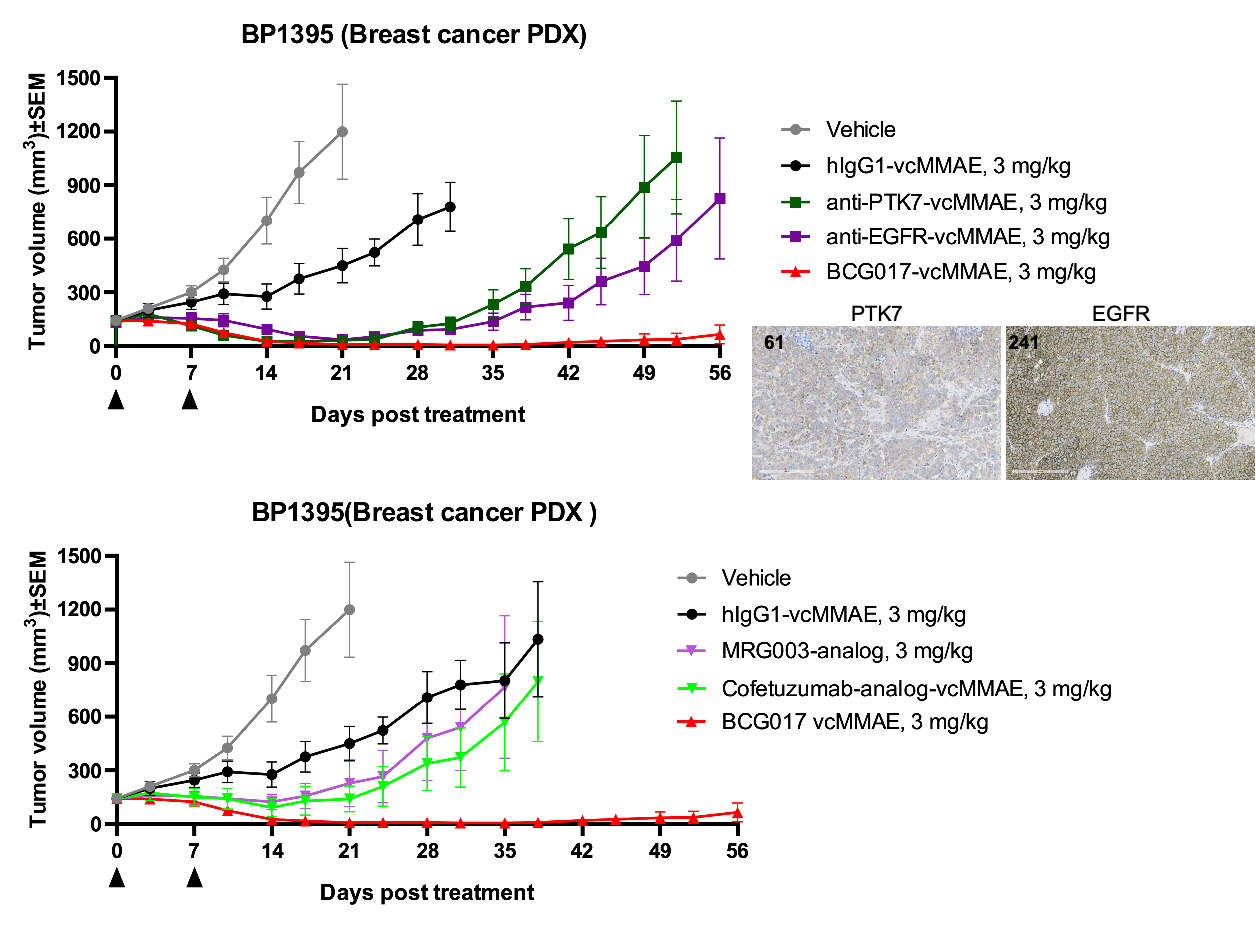

on this page

The PTK7×EGFR demonstrated increased endocytosis activity compared to the anti-PTK7 antibody in double-positive MDA-MB-468 (A) and A431 (B) cell lines. The internalization of monovalent (mv) anti-EGFR was significantly reduced compared to the bivalent form, suggesting that the PTK7×EGFR bsAb can promote the internalization of the PTK7 arm with tumor selectivity for the EGFR arm.

BCG017-vcMMAE exhibited enhanced anti-tumor efficacy compared to its parental Ab ADCs (A) and benchmark ADCs (B) in a PTK7-low pancreatic PDX model.

In a low PTK7 expressing breast cancer PDX model, the BCG017-vcMMAE displays enhanced efficacy compared to its parent antibodies-ADCs consistent with the BP0203 data (A), outperforming the benchmark ADCs (B). MRG003 is a clinical-stage EGFR-targeting ADC with MMAE for payload.
EGFR is a widely utilized target in various cancer therapies. However, EGFR-based therapies have been challenged by drug resistance and on-target toxicity. EGFR-targeted ADCs represent a promising new therapeutic strategy to address the drug resistance, due to the potent killing effects of the conjugated payload. Furthermore, we hypothesized that the development of a bispecific ADC (bsADC) targeting EGFR and another tumor-associated antigen could help to improve the tumor selectivity with a “1+1” format, thereby limiting the on-target off-tumor toxicity. PTK7, which is expressed on the tumor-initiating cells, belongs to the same receptor tyrosine kinases family as EGFR and is co-expressed with EGFR in multiple types of solid tumors, including lung, head and neck, esophageal, and colorectal cancers.
Herein, we developed a fully human anti-human PTK7 х EGFR bsAb using our proprietary common light chain RenLite mouse platform and knobs-into-holes technology that demonstrated high binding and internalization in vitro. The monovalent EGFR antibody reduced internalization as expected.
Learn more about the RenLite and ADC platform.